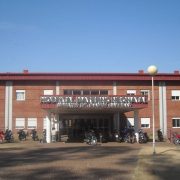70 years of female vote
“Below, we offer a google translate version of the original article in Spanish. This translation may not be accurate but serves as a general presentation of the article. For more accurate information, please switch to the Spanish version of the website. In addition, feel free to directly contact in English the person mentioned at the bottom of this article with regards to this topic”
However, in order to start being elected the process was very different. Only through the Act of Women’s Occupation in 1991, the representation of women began to be guaranteed by the State. This law allowed the structures of gender inequality to begin to be overcome. The numbers speak for themselves: before the law, women elected to public office in Congress did not exceed 6% of all seats. Today women occupy 41.7% in the Senate and 38.5% in Deputies. However, there is still a long way to go.
At present, although women make up more than half of the population, female representation does not reach 50% in any decision-making space. According to an investigation carried out by the Latin American Justice and Gender Team (ELA) on the elections, in 2017, there are very few lists that do not comply with the Women’s Act. However, the parties’ interpretation of its application has begun to transform itself into a roof over participation, rather than a guarantee tool.
In the provinces where a parity law has been implemented (Salta, Buenos Aires), the female representation has been higher, but this is not evident in the rest of the country. That is why it is necessary to generate mechanisms that can promote a real commitment to gender equality in political parties, as well as the implementation of a national law of parity that guarantees a representation of women that is in accordance with the social configuration of gender.











